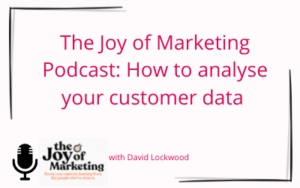The secret to success for multi-channel retailers is keeping the customers they recruit. As the stats show, brands are much more likely to sell to existing customers (60-70%) than a new customer (>20%). Added to that, increasing retention by just 5% can boost profits up to 95%. But this is easier said than done. Marketing to existing customers at the right time for them is key – and never more so than when they are starting to lapse.
The problem is, each and every customer will lapse at a different time. Let’s say Customer A places an order once a quarter, and Customer B places an order once a year. After nine months, it’s safe to assume that Customer A has lapsed, while Customer B will probably not buy again until their usual purchase anniversary.
Many retailers have a lapsing strategy in place. However, the approach they take is often too broad. While it’s tempting to base lapsing campaigns on the average customer buying cycle – for example, nine months after they last purchased – this isn’t a targeted enough approach.
Firstly, you will have missed Customer A by six months, by which time they may not purchase from you again without a great deal of effort to re-engage. Secondly, you’ll be messaging Customer B too early in their cycle and if you offer a discount to buy again, you could be giving away unnecessary margin. What’s more, our analysis has shown that not contacting lapsed customers at the right time can lead to a decrease in overall orders over time.
By looking at each individual buying cycle, you can take pre-emptive measures to re-engage each customer just at the pivotal moment, when they are most likely to consider a purchase.
So, what steps can you take?
1. Build a lapsing customer model
A lapsing customer model takes the guesswork out of pinpointing which customers are at risk of lapse. The model identifies each customer’s likelihood to lapse based on their unique purchase frequency patterns. Every customer is allocated a score and the model is re-scored every month. It’s a simple but effective way of targeting the right messages at the right lapsing customers to encourage repurchase. Customer insight partners, such as Tapestry, can build this model for you to embed into your ‘business as usual’ marketing strategy.
2. Connect across all channels
Once you’ve worked out the timings for your re-engagement campaign, make sure you’re able to reach lapsing customers through the best combination of channels. For instance, to boost the response rate of an email campaign, consider supplementing with print, or perhaps adapt the content so that it ties in with a paid search or paid social campaign that you’re running at the same time.
3. Make customers feel exclusive
Once you have the attention of lapsing customers, consider a personalised offer – such as a discount or voucher – which isn’t available to other customers. Including a cut-off date will also help create a sense of urgency (and help you plan your stock levels).
4.Don’t get complacent
Tapestry’s in-depth analysis of reactivated customers for Cosyfeet shows they are less likely to lapse again, and their subsequent value is 3-4% higher than recruits. It’s really important not to neglect this segment. Instead, take the opportunity to reach them with short, sharp messaging. This might include sharing company news, or simply reminding them of your offering to keep your brand front of mind. Prioritising reactivated customers in this way can lead to significant incremental lifts (which means a greater return on your marketing spend).
In the age of the distracted consumer – where customers are making purchase decisions across more channels than ever – having a strong retention strategy in place is no longer a nice-to-have. If you’re unsure how best to map out your plan for customer retention, including pinpointing and re-engaging lapsing customers, Tapestry can help. Get in touch today – we’d love to chat.
For details on how we helped Cosyfeet build their own bespoke lapsing model as part of a wider customer retention strategy, read the case study here.




